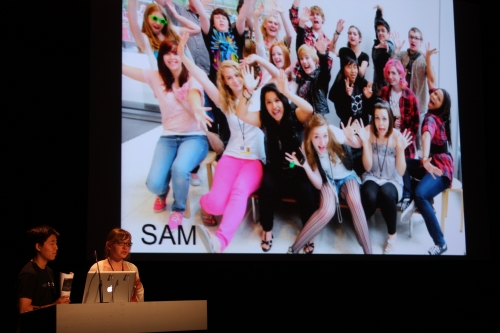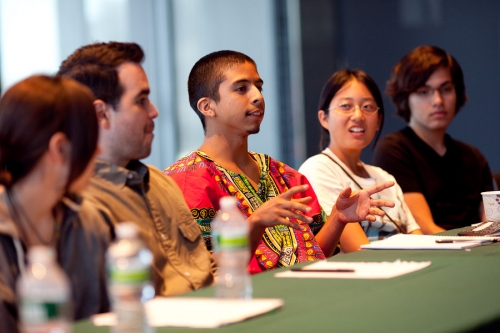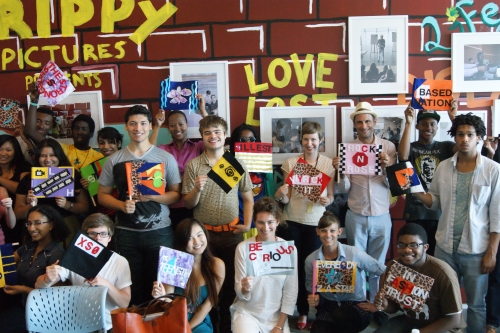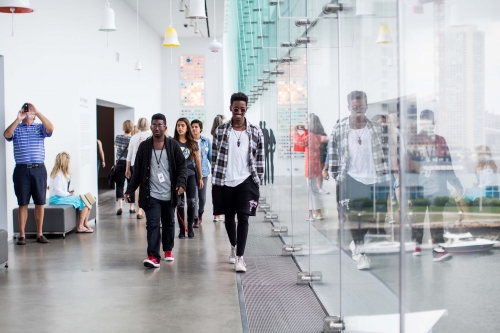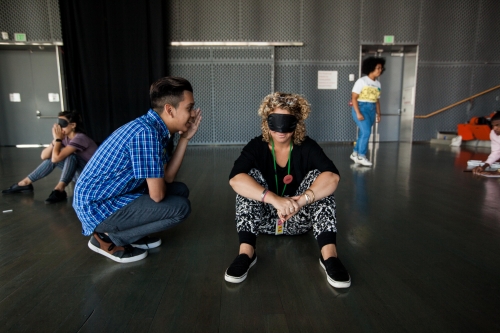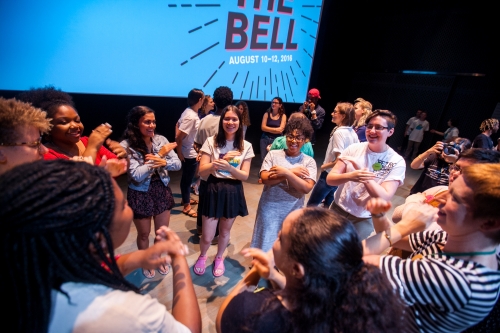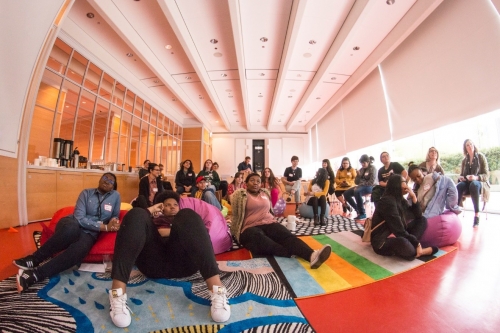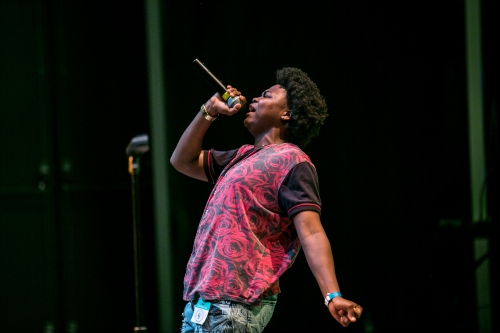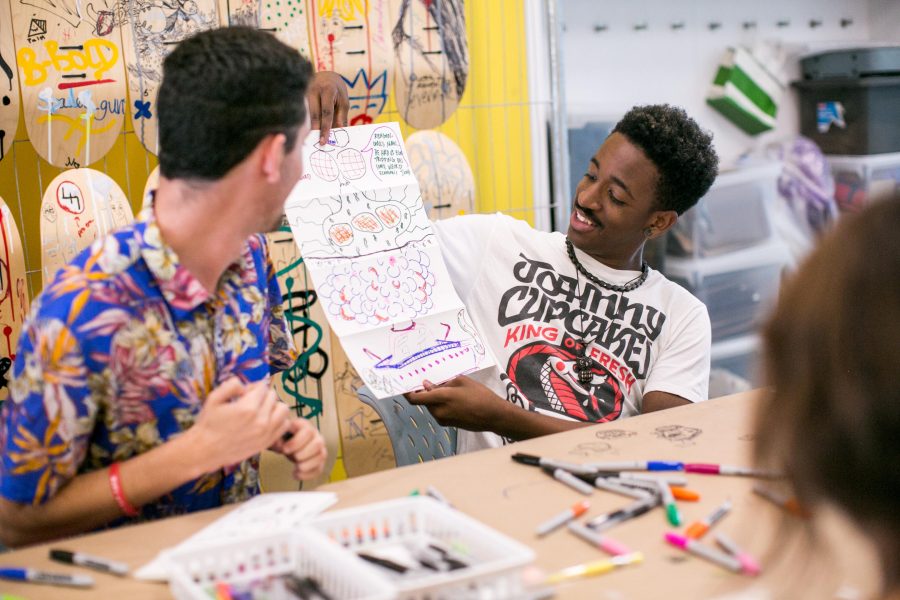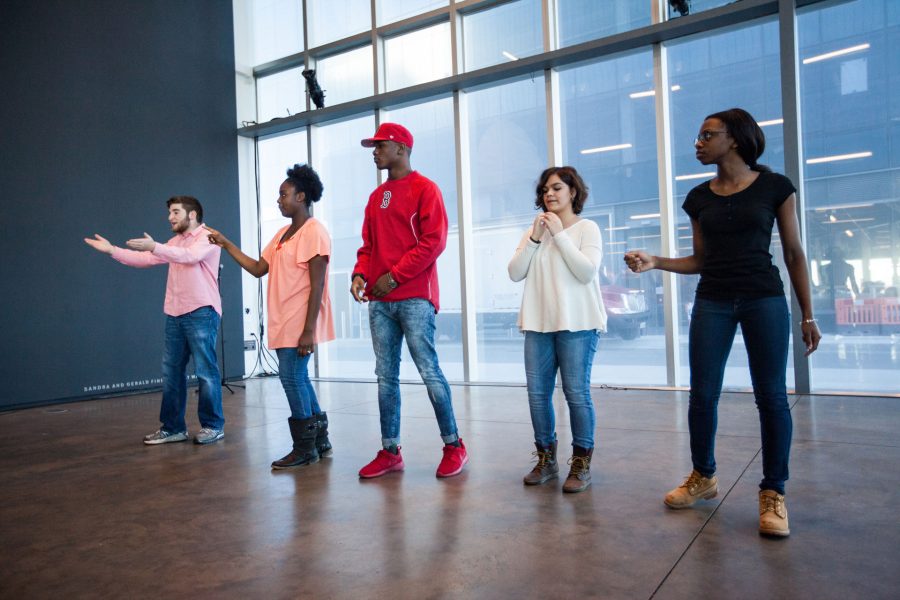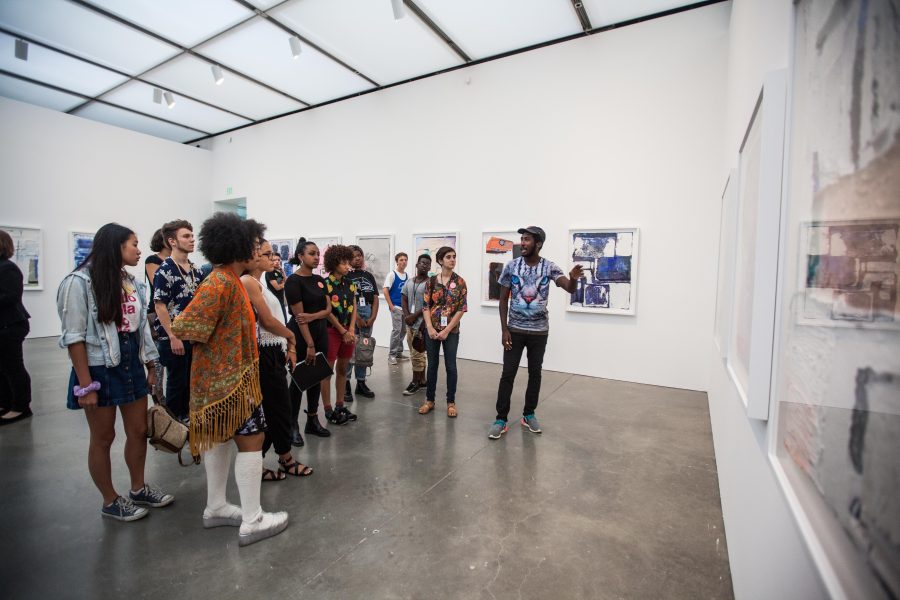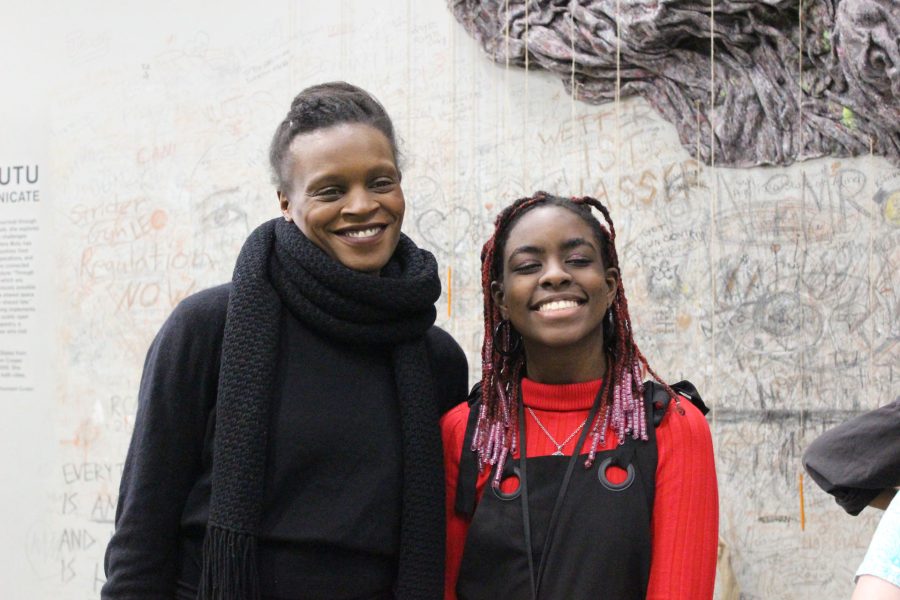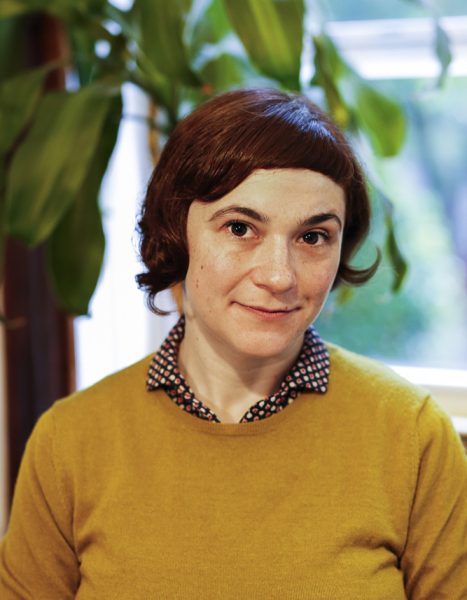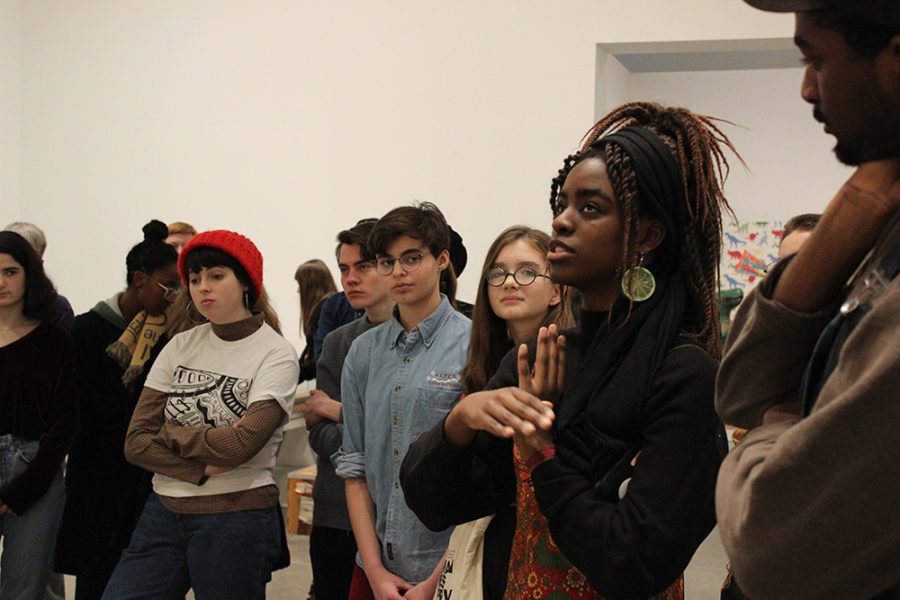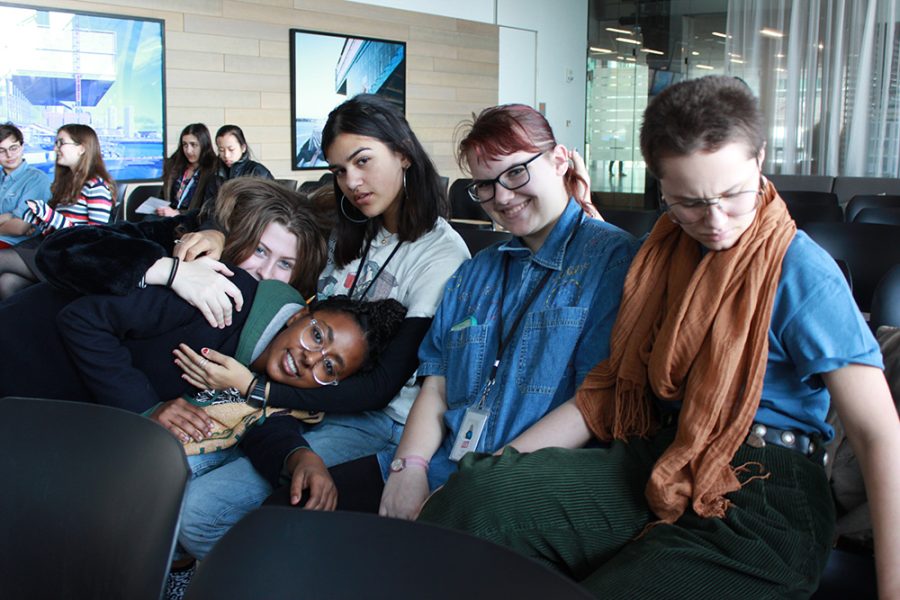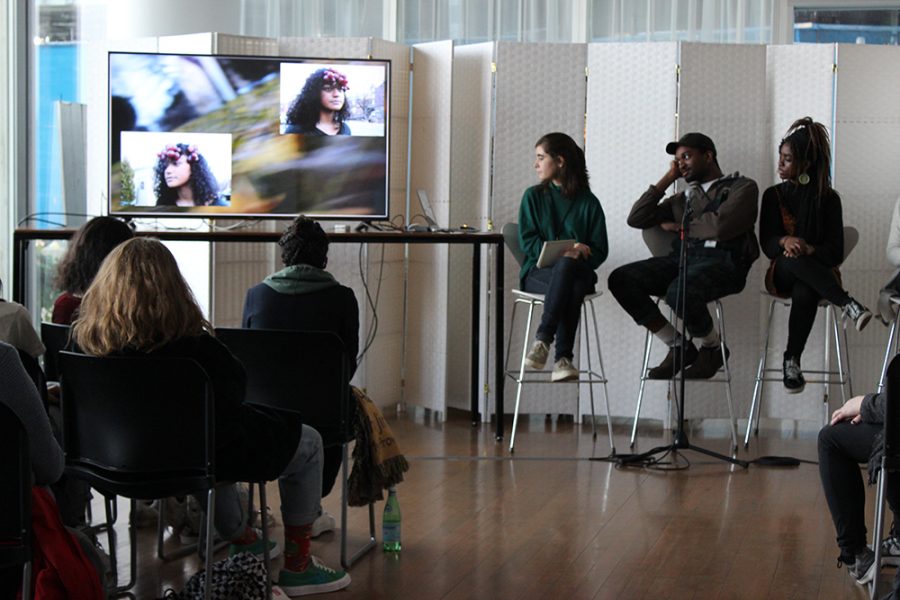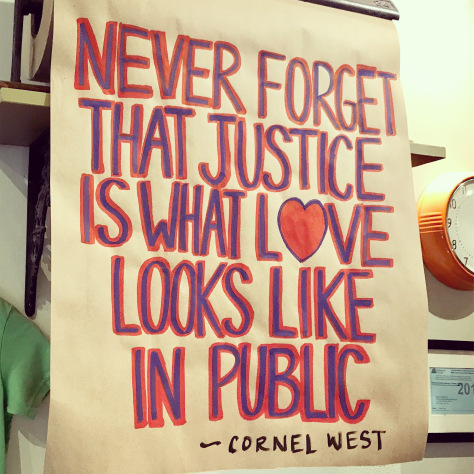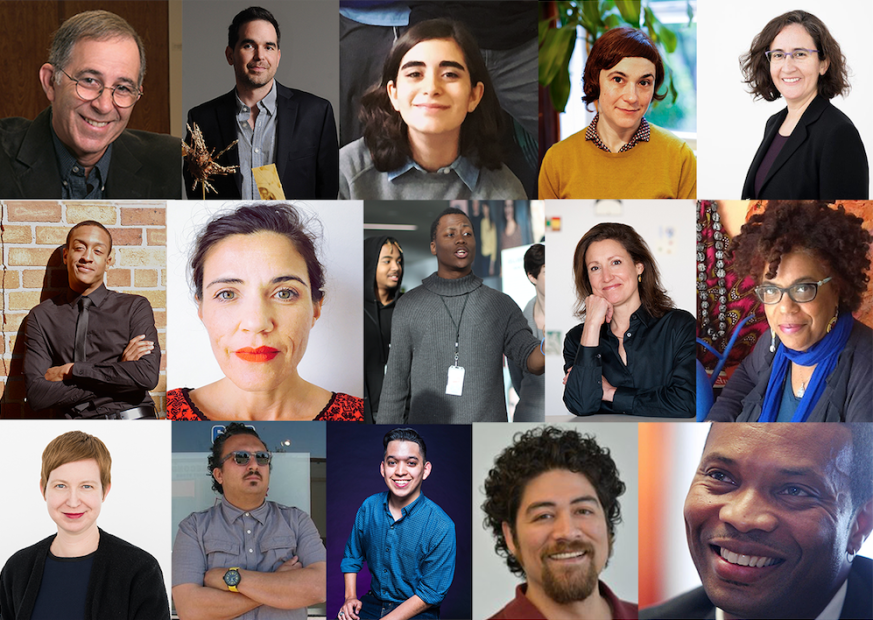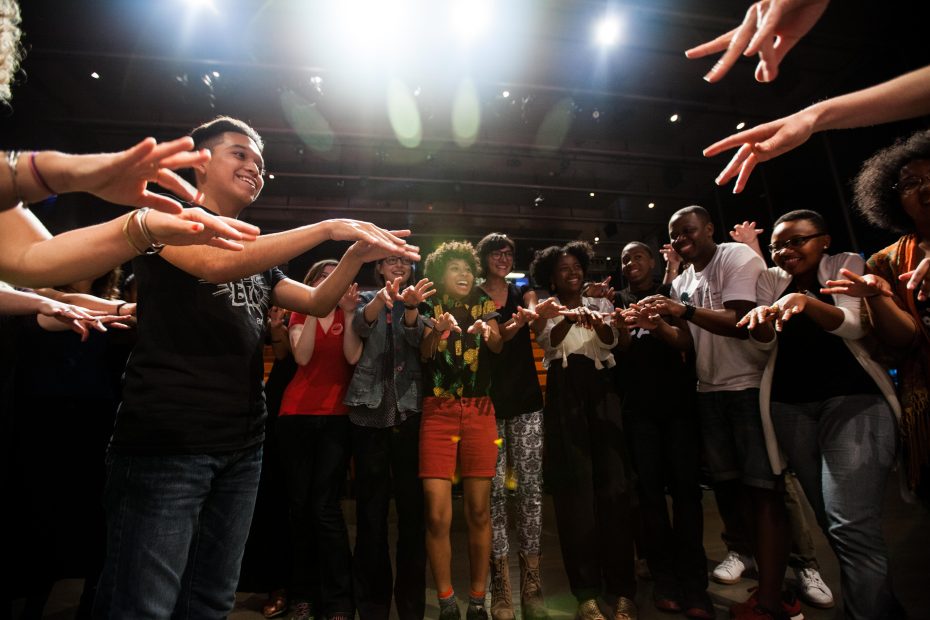
Since 2009 the ICA Boston has hosted the National Teen Convening for teen and educators nationwide. Teen Convenings center youth voice in a field-wide conversation, opening space for teens to contribute to knowledge and decisions about their own arts education. While Building Brave Spaces will follow a slightly different model than the Teen Convening, we have learned a lot from the successes of Teen Convenings that informs planning for the conference. Above all, we have learned that shared voice among youth and educators is essential to the growth of teen arts education. Read on for a re-cap of past teen convenings—all of these themes will inspire and find their ways into Building Brave Spaces!
2009: Generation 0
The inaugural teen convening, Generation O explored how teens’ experiences in museums shape their future, how institutions maintain relevancy to teens and how various institutions can share stories about teen programs. These teen participants laugh and share in conversation around the now emblematic Teen Convening-style roundtable that centers youth and educator voice together. Look for roundtable sessions at Building Brave Spaces!
Partnering Organizations:
- Marwen
- Museum of Contemporary Art, North Miami
- Museum of Modern Art
- Walker Art Center
2010: Art and Identity: Making Art to Belong, Making Art to Distinguish Oneself
Teens are simultaneously challenged with forming individual identities and also finding place in a group of peers. The second annual teen convening approached art and identity together, asking how art aids in both of these processes. Here, teens from the Seattle Art Museum present from their own teen programs to Convening participants.
Partnering Organizations:
- The Bronx Museum
- Contemporary Arts Center/New Orleans
- Marwen
- Seattle Art Museum
- Walker Art Center
- Whitney Museum of American Art
2011: Real Life Remixed
Art is both self-contained and ameliorative; in this teen convening participants explored the notion that art museums can, similarly, be safe spaces and welcome experimentation to challenge everyday life. Teens, educators, and artists shared voice on this 2011 teen convening panel.
Partnering Organizations:
- Arthouse
- Marwen
- Museum of Contemporary Art Los Angeles
- Museum of Contemporary Art San Diego
- The Walker Art Center
- The Warhol Museum
- The Wexner Center for the Arts
- The Whitney Museum
2012: State of the Art: teens and technology
Teens and technology seem to go hand in hand. This convening dove deeply into the ways in which technology can be utilized by museums to make visiting experiences better for teens. It also explored the role technology and the internet plays in forming identity and the multiple identities that appear as a result of having an online persona. Teens, educators, artists and other interested parties joined in the three day event to explore these topics. In this photo, teens and educators show off their hand-made flags after a Teen Convening artist encounter with Aaron Rose.
Partnering Organizations:
- Hirshhorn Museum and Sculpture Garden
- Los Angeles County Museum of Art
- Marwen
- The Studio Museum in Harlem
- The Walker Art Center
- Yerba Buena Center for the Arts
2013: Customize: Maker Culture, Youth, Creativity
Experimentation is a vital process for youth and teens, and this convening explored the role of experimentation and participation in customized experiences. Sessions, roundtables, and presentations explored the overlap and links between maker culture and art practice and how these can be applied to teen programs. The teen convening participant above deconstructs a machine!
Partnering Organizations:
- The Contemporary Art Museum Saint Louis
- The Museum of Contemporary Art Chicago
- The Nelson-Atkins Museum of Art
- The North Carolina Museum of Art
- Seattle Art Museum
- Yerba Buena Center for the Arts
2014: Give and Take
Teens are impacted greatly by arts education programs, but what impact do teens have on the museums they call home? Give and Take considered this exchange and the positive impact teens have on their host institutions. Teen presence in the museum and/or institution can create more equity and fundamentally shifts the ways in which museums operate, from visitor assistants in the galleries, to educational programming, to relationships with artists. Pictured above is Aric Oak, now an ICA Teen alumnus and teaching assistant in teen programs.
Partnering Organizations:
- Art Gallery of Ontario
- Artpace San Antonio
- Hirshhorn Museum and Sculpture Garden
- The Museum of Contemporary Art, Denver
- Park Avenue Armory
- Whitney Museum of American Art
2015: Outside the Lines
Outside The Lines was all about blurring boundaries, breaking down silos and encouraging the cross disciplinary and expansive nature of contemporary art practices. Convening participants had conversations and completed activities that allowed them to consider the ways art museums and teen programs can also exist ‘outside the lines’ of traditional art and museum practice.
Partnering Organizations:
- Artpace
- The High Museum
- Museum of Contemporary Art, Chicago
- Museum of Contemporary Art, Detroit
- The Pérez Art Museum Miami
- Queens Museum
2016: After the Bell
There is magic in learning after the bell. This teen convening focused on distinctive out-of-school based arts programming that prioritizes active learning, self-direction, collaborative experiences and creative freedom. Art museums are vital places that support growth and development for teens through creative, focused time.
Partnering Organizations:
- The Art Institute of Chicago
- The Brooklyn Museum
- The Contemporary Austin
- Crystal Bridges Museum of American Art
- The High Museum of Art
- Los Angeles County Museum of Art
- Ogden Museum of Southern Art
2017: Regional Teen Convenings
While the Teen Convening is a national program founded and managed by the Institute of Contemporary Art Boston, it is brought to life by a network of partner organizations across the country. In the spirit of the Teen Convening’s goal to empower teens to lead vital conversations on a national level about young people in the arts, the Teen Convening/Regional program supports arts organizations to produce geographically relevant and impactful Teen Convening–style events at the local level. During 2016 and 2017 regional convenings were held nationwide. Here is a group of regional Teen Convening participants at the Art Institute of Chicago.
Regional Convening hosts:
- The Brooklyn Museum
- LACMA
- The High Museum
- Crystal Bridges Museum of American Art
- The Contemporary Austin
- The Art Institute of Chicago
- The Odgen Museum
- Artpace
- Museum of Contemporary Art Chicago
- Museum of Contemporary Art Detroit
- Perez Art Museum Miami
- Queens Museum
2018: Building Brave Spaces
Now, marking ten years of Teen Convenings, ICA Boston will host Building Brave Spaces, a national conference on the field of teen arts education. The conference is distinct from the convening structure and expands upon past years’ learning. We invite educators, CYD practitioners, and teens nationwide to gather and consider the future of teen arts education. How can we build brave spaces for teens and educators alike? Join us in November 2018 to figure it out!

